When we do the right thing, the body responds immediately, says Douglas Heel.
Be Activated is a way of looking at the body to see what the body needs in order to perform at its highest level. Clients range from the very sick and dysfunctional to those at the peak of their performance who want to get better, train harder and avoid injuries. We also work with all ages from the very young to the very old.
The body is an amazing system and, when we give it what it wants, it responds immediately. In order to be an effective practitioner, we believe you need to always have a feedback loop:
BEFORE – INTERVENTION – AFTER
This way, you know what is working and what is not. In normal sessions we use strength, power, flexibility and endurance as measures, but we can as easily use speed, balance and co-ordination, as all of these are strongly interrelated.
As we unlock the potential of the body, our clients immediately feel different – not just stronger, but taller, lighter, happier, grounded and many more descriptions of ‘feel’. Clients report that they sleep better, manage stress better and, overall, build a greater resilience in their lives (no matter what the reason they came to us in the first place).
For us, this is important because it means that they are dropping down the staircase of the autonomic system.
We start off a session testing the body in a 123 pattern. This helps us and our clients to understand why their body is doing what it is doing. Often the compensations result from injuries, pain patterns and breakdowns in movement. Having our clients understand more about what is happening in their bodies allows them to take greater ownership of their process and training, which takes the burden off you the therapist or trainer.
Once we know the compensatory patterns that the body is running, it is time to activate. Through simple activations and fun ways to hack or interrupt poor neural pathways, we help our clients connect with what is happening in their body right now. Through the Be Activated system you will very quickly come to understand how easy it is to reconnect and rebalance your body and will explain why we sometimes struggle with activities that we enjoy.
Correct breathing
The first priority is to get you breathing properly. Apical/chest breathing doesn’t provide your body with enough O2 and this will affect every single system in your body from general fatigue and lethargy right through to chronic stress and illness. The good news is that it is relatively easy to kickstart your diaphragm, and once you do you will quickly feel the difference. Some people experience a sense of space, more room or an ease in their breath. You might feel a bit dizzy for a few moments while your body distributes the extra oxygen.
Instead of explaining activations in this article, we want to invite you to experiment with us …
Breathing is one of the priorities of the body (obviously). In the last year we have added this simple test to our workshops.
Why? So that you can see and feel how breathing in the different areas impacts on your entire body and its functions.
Our goal is always to help our clients find a deep belly breath. But why? Heads up! The diaphragm and the psoas are directly linked. In fact there is new research showing that they share common muscle fibres. The psoas and the glute are reciprocal partners. If the glute is not working the hamstring tightens to take over with the erector spinae. So we are going to use hamstring flexibility as a measure of change with different breathing patterns.
Let us start with a hamstring flexibility test. IMPORTANT: the test must be passive (your client does not do anything to assist). This will give you the baseline of where they are at before you ask them to do anything.
Test both sides
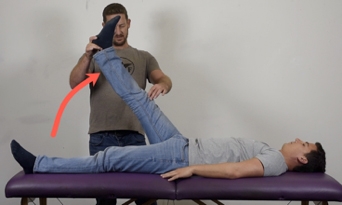
Observe the range of passive movement of the leg. How does it feel at the end range for you and for them? Do you both agree on the end range? This is your start point. Your baseline. From here we can start our interventions. And so the experiment begins …
- Place your hand below the belly button.
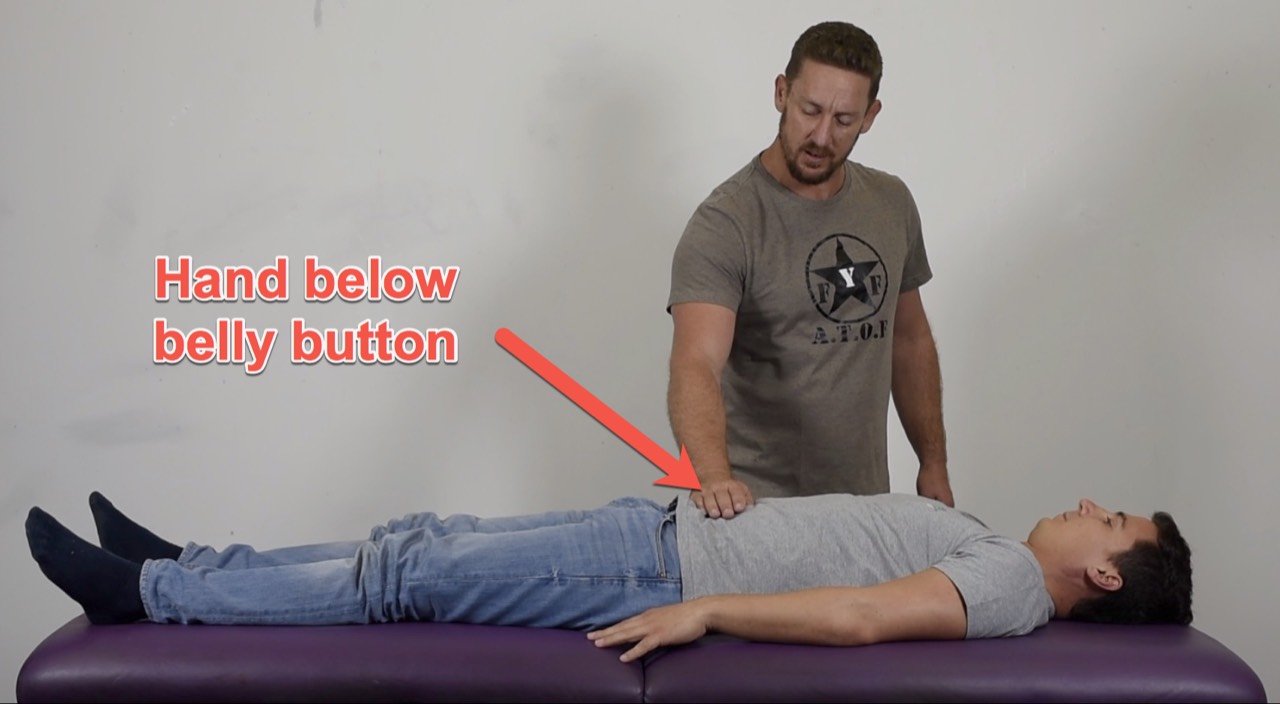
❖ Ask them to take five breaths.
❖ Now re-test hamstrings.
- A little more focused. Place one finger about 5cm below their belly button.
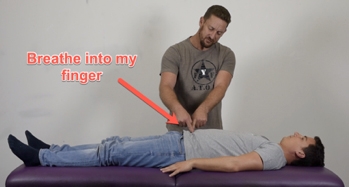
❖ Get them to take five breaths.
❖ Re-test the hamstrings.
- Often people think they are belly breathing. This time, place your hand above their belly button.

❖ Get them to take five breaths.
❖ Re-test hamstring.
- Now test lateral collateral breathing. Put your hands on their ribs and get them breathing in to your hands.
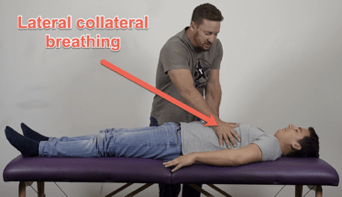
❖ Get them to take five breaths.
❖ Re-test hamstring.
- Last one. This is about apical breathing. Ask them to breathe high into their neck and upper rib cage.
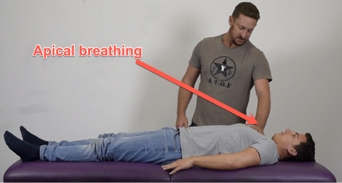
❖ Get them to take five breaths.
❖ Re-test hamstring.
Did the change of breathing have any impact? What we anticipate is that each time the breathing changes, so will their hamstring length. For some people it is a subtle 5-15ᵒ of change. For others, it can be as much as 50ᵒ. But don’t take our word for it: go out and play.
If this experiment intrigues you and you want to learn more, come and join us on a workshop and discover how incredible the body really is. douglasheel.com/diary







